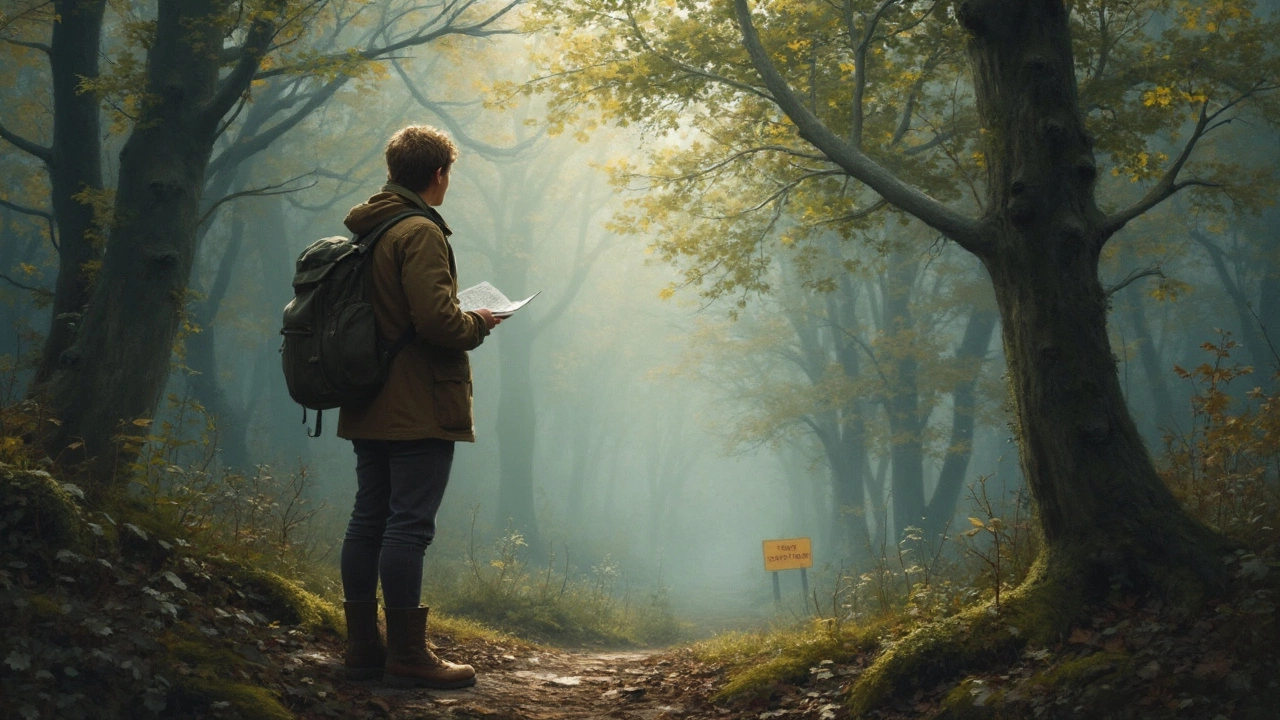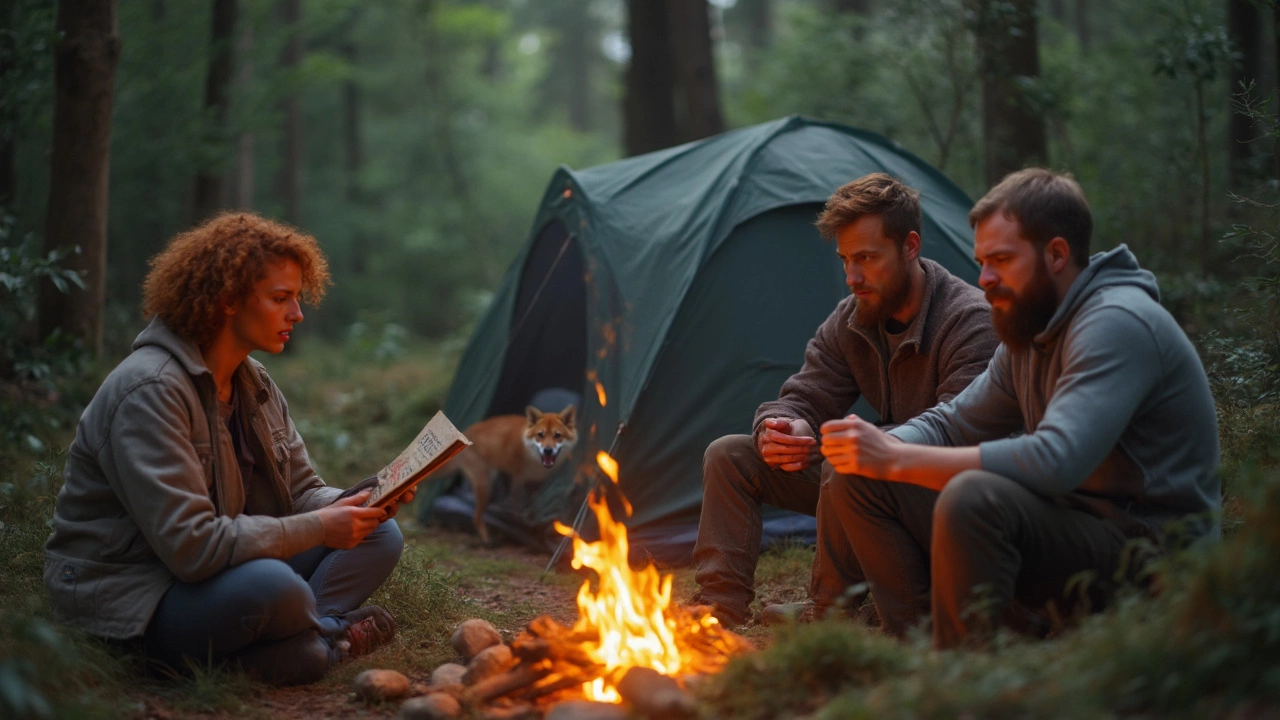Can You Legally Live in the Woods? Answers for Forest Campsites
 Jun, 15 2025
Jun, 15 2025
People love the idea of escaping to the wilderness and living off the land. But just because there’s a lot of forest out there doesn’t mean you can pick any spot and set up a permanent camp. The short answer? In most places, it’s not exactly legal to just go live in the woods. There’s a mix of laws, park rules, and property rights you need to know before you even pull out your sleeping bag.
If you show up at most national or state forests with all your gear and a plan to stay forever, you’ll hit some rules real quick. Most public lands (like forests managed by the U.S. Forest Service) give you about 14 days at one spot, then you’re supposed to move. If you keep hopping from spot to spot in the same forest district, the rangers will catch on and hand you a ticket—or escort you out.
Thinking about private land? Unless you own it (or have written permission from someone who does), camping long-term there is trespassing. Doesn’t matter how remote it looks, land ownership data is all digital these days, and folks who own rural land usually keep an eye out.
So the bottom line is that you can’t just “disappear” into the woods and legally make it your home. But if you understand the rules, you might be able to find a way to scratch the itch—and avoid a run-in with the law in the process.
- What's Legal (and What's Not)
- How Public Lands Work
- Tips for Staying Under the Radar
- What Happens If You Get Caught?
What's Legal (and What's Not)
Before you stash your backpack and hope for the best, let’s break down how this actually works in the US. "Living" anywhere usually needs more than just pitching a tent. The minute you set up camp and don’t move along, things get complicated fast.
On forest camping land managed by the U.S. Forest Service, Bureau of Land Management (BLM), or state parks, long-term camping has pretty strict limits. Most national forests and BLM lands let you camp for up to 14 consecutive days in one area. After that, you have to move your camp at least five miles away. Stick around too long, and you’re breaking federal regulations. State parks are usually even tighter—some allow only seven days, some don’t let you camp outside of designated spots at all.
- National Forests & BLM Land: 14 days, then move 5+ miles for at least 14 days before you can return.
- State Parks: Limits run from a few days to one or two weeks. Always reserved spaces.
- Private Land: You need explicit permission from the owner or you risk trespassing charges.
- City or County Land: Nearly always illegal to camp outside of established sites.
Here’s a quick look at the most common time limits on public land:
| Type of Land | Max Continuous Stay |
|---|---|
| National Forest | 14 days |
| BLM Land | 14 days |
| State Parks | 7-14 days (varies) |
Trying to go under the radar for months? It gets risky. Rangers do regular patrols—especially if you’re near water, hiking trails, or major access roads. If they find you breaking rules, you can get fined, cited, or booted from the area. And yes, there’s a record of repeat offenders.
It’s also not legal to use the woods as your long-term bathroom or to make your own unauthorized shelters. Laws about trash, sanitation, and even how you gather firewood are pretty strict. You can't just cut down trees for a lean-to; that’s considered resource damage and can get you a hefty fine.
In a nutshell: public land has timers, private land needs paper (permission), and sneaky living can end in legal trouble pretty fast. Do your homework for each area—rules do change by state and even by forest district. And the more popular the spot, the more eyes are on you.
How Public Lands Work
It gets confusing fast when you look at who controls forest land in the U.S. The main thing you should know: most forests aren’t lawless blank spots—there are agencies keeping tabs on what happens there. Public lands include national forests, state forests, Bureau of Land Management (BLM) land, and local parks. Each has its own rules about camping, and each watches for people overstaying their welcome.
For example, national forests are run by the U.S. Forest Service. They usually allow what’s called “dispersed camping,” which means pitching a tent outside of developed campgrounds. But there are strings attached. The key rule is the 14-day limit in any single spot, sometimes anywhere within a 30-mile radius. After your time’s up, you have to move elsewhere—and not just fifty feet away. Rangers do patrol, especially in busy areas, and they’ll actually keep logs of campers using GPS coordinates. Get caught pushing your luck, and you could get fined or banned.
- National forests: 14 days per spot, then move on
- BLM land: Also usually 14 days, then 25+ miles away
- State forests: Rules vary a lot—some allow camping, some don’t
- Local parks: Rarely allow camping outside of designated areas
Check this out—here’s a quick look at how much land each agency actually controls, just so you get the bigger picture:
| Agency | Acres Managed |
|---|---|
| U.S. Forest Service | 193 million |
| Bureau of Land Management | 245 million |
| National Park Service | 85 million |
| Fish & Wildlife Service | 89 million |
Most people looking to try forest camping long-term stick to national forest or BLM land because the rules are clearer and enforcement isn’t quite as intense as national parks. But don’t expect to stay forever without rangers noticing. If your camp starts to look too permanent—holes dug for toilets, makeshift shelters, or trash piling up—you’re definitely on their radar.
The safest move? Before you go, check each specific forest or BLM district’s website. They post camping limits, fire rules, maps, and sometimes even up-to-date alerts about what’s enforced most fiercely right now. It’ll save you a lot of trouble and maybe a fine or two.

Tips for Staying Under the Radar
If you’re still thinking of trying to pull off living in the woods, you need to know how people avoid drawing attention and how they mess up. Everything from campsite habits to the way you move around matters—especially if you want a longer stay in a public forest.
The key is blending in. Keep your site hidden, stay clean, and don’t act like you own the place. Rangers notice folks who leave trash or build big structures. They’re looking for anything that breaks from normal forest camping—like staying in one spot too long or having a giant camp setup.
- Pick campsites that are out of sight from main trails and roads. Natural cover—like bushes or rocky outcrops—helps hide tents and tarps.
- Use muted colors for all gear. Bright tents or clothes stand out in the woods, and so does smoke from big campfires. Cook with a small stove if you can.
- Pack up and move before hitting the 14-day stay limit. Forest Service rules usually say you need to relocate at least five miles away if you want to reset the timer. Don’t just switch to the next clearing over.
- Store all food and trash properly. Animals digging through your stuff not only make a mess, they attract attention. Bear canisters work better than hanging your food, especially in areas with rangers who check campsites.
- Keep noise down. Sound carries farther in the woods than you’d think. That goes for dogs barking, tools banging, and even talking late at night.
- If you see rangers or other officials, act chill and have a believable reason for being there. “I’m hiking and camping for the week” is fine; talking about staying for months is not.
If you’re in a group, keep it small. Solo campers attract less notice, but if you camp with others, keep your setup simple and tight. Don’t build anything permanent—no log cabins, outhouses, or big fire pits. Those get spotted fast, either by patrols or satellite images the Forest Service sometimes uses.
For some ideas on how people actually get caught, check out this table of common mistakes and how often they result in ranger visits on public forest lands (from a survey by the Leave No Trace Center in 2023):
| Mistake | Chance of Ranger Check (%) |
|---|---|
| Leaving trash around | 72 |
| Staying past 14 days in the same spot | 65 |
| Making large campfires | 59 |
| Setting up visible structures | 83 |
| Noise complaints | 44 |
Notice how small stuff—like trash or a big structure—is almost always what gets people noticed. Move smart, keep it low-key, and don’t attract attention, and you’re a lot less likely to have a ranger knocking at your tent flap.
What Happens If You Get Caught?
So you’re out in the woods, maybe overstaying your welcome, and a ranger or landowner shows up. What’s next? Well, don’t expect a friendly campfire chat—there are real rules and penalties for breaking them.
On public land like a national forest, rangers usually lead with a warning if it’s your first offense. But if you ignore the rules or it’s not your first run-in, things escalate fast. Most national forests enforce a 14-day stay limit per camp spot. If you’re found violating this, you might get a citation and be told to leave right away.
If you don’t listen, here’s what could go down:
- Forest camping bans can result in fines, usually between $100 and $500 per incident.
- On protected or wilderness zones, illegal camping can jump up to a misdemeanor, which means court dates and even jail time in rare cases.
- On private land without permission, that’s trespassing—landowners can call law enforcement to remove you or press charges. This can mean even higher fines and possible criminal records.
Most rangers log your info if you’ve been caught once, so repeat offenses rack up bigger penalties. If they find abandoned campsites (even if you’re not there when they arrive), they can use whatever gear you left behind as evidence against you.
Check out the table below for a glimpse at what different agencies can hit you with if you overstay:
| Agency/Land Type | Penalty | Fine Range |
|---|---|---|
| U.S. Forest Service | Citation + Forced Move | $100 - $500 |
| Bureau of Land Management | Citation, Repeat Offenses as Misdemeanor | $100 - $1,000 |
| State Park | Eviction, Possible Ban | $50 - $300 |
| Private Property | Trespassing Charge | $200 - $1,500 |
There are cases where people have racked up thousands in fines by ignoring these laws, especially in places known for lots of off-grid camping. States like California and Colorado watch popular forest areas closely. If a ranger asks you to move—or takes your info—it’s best to pack up instead of risking more trouble.